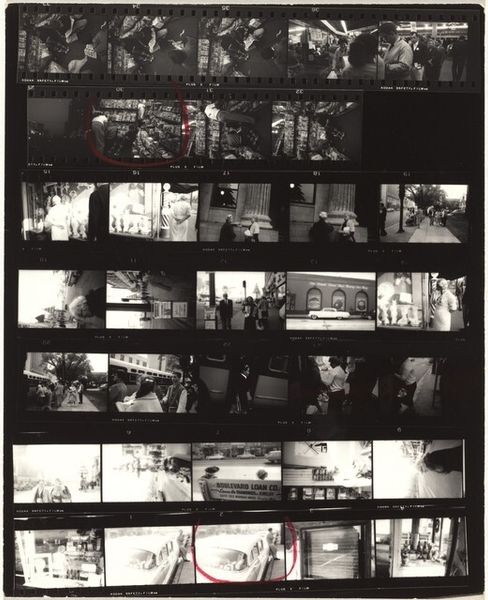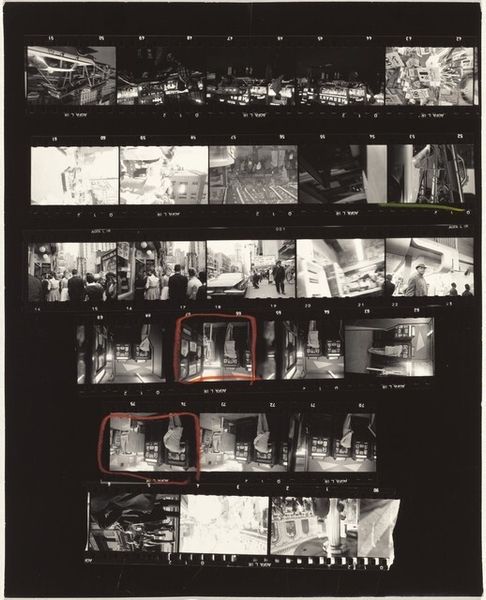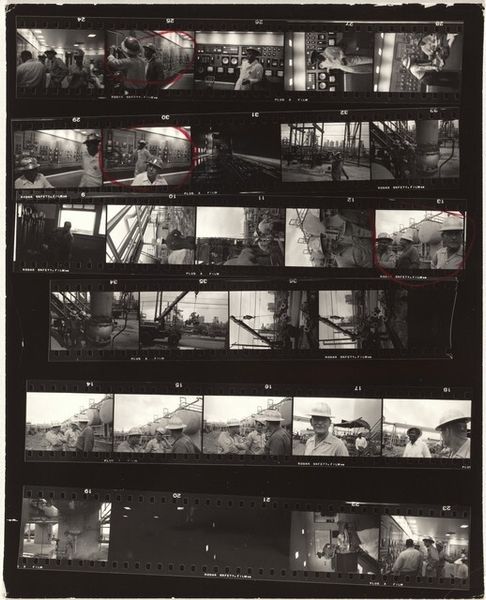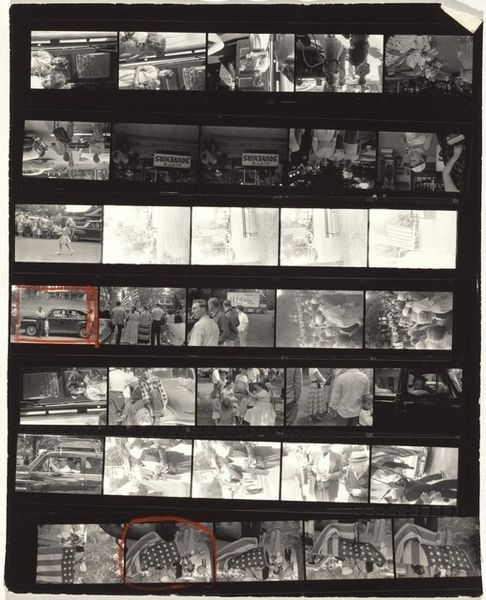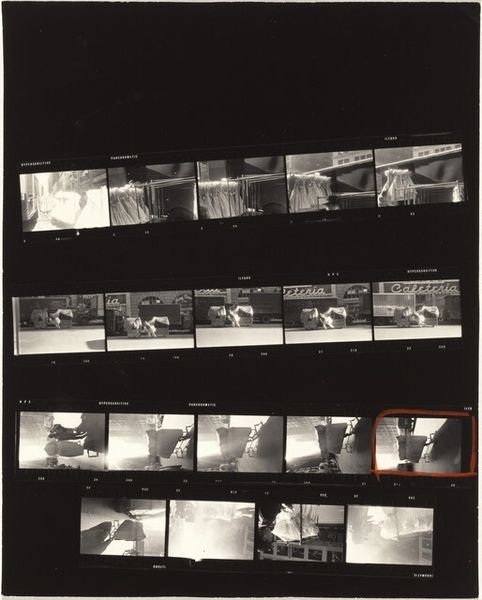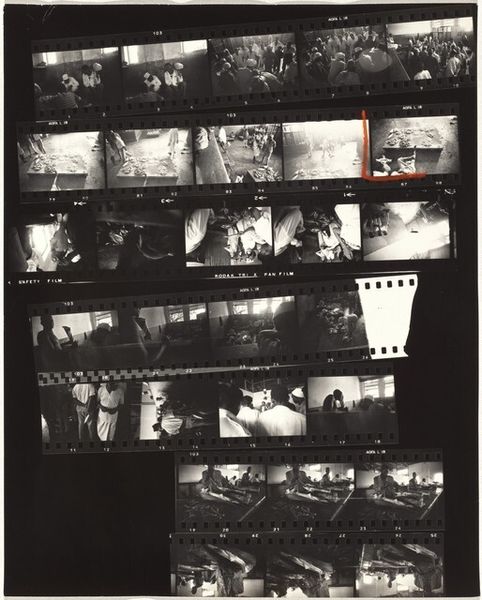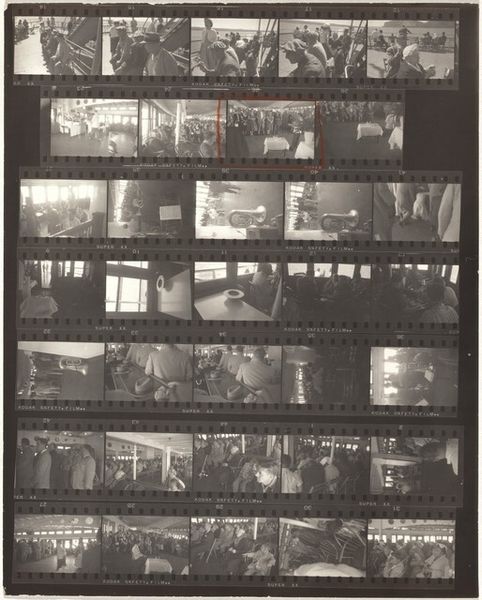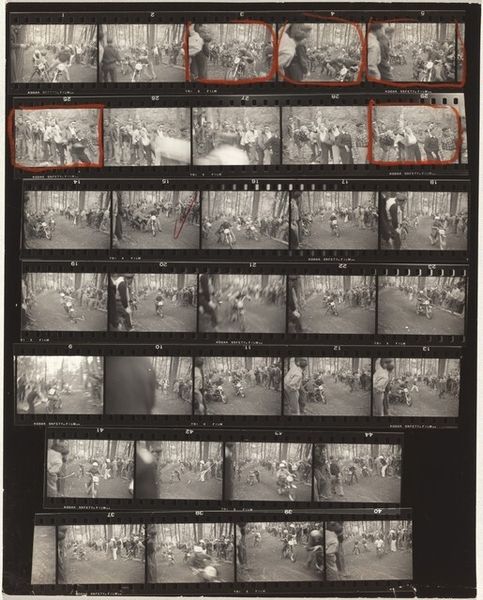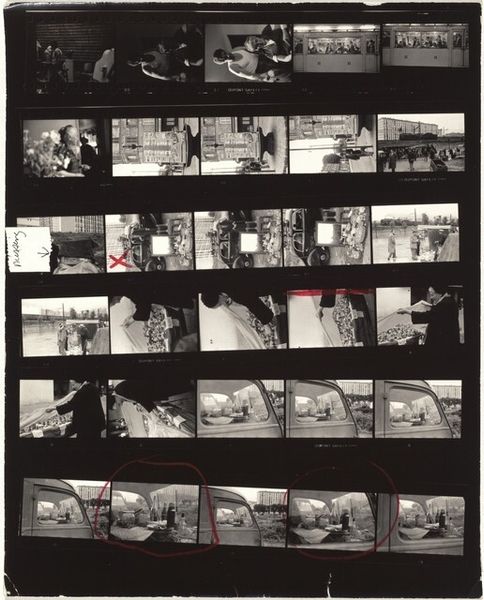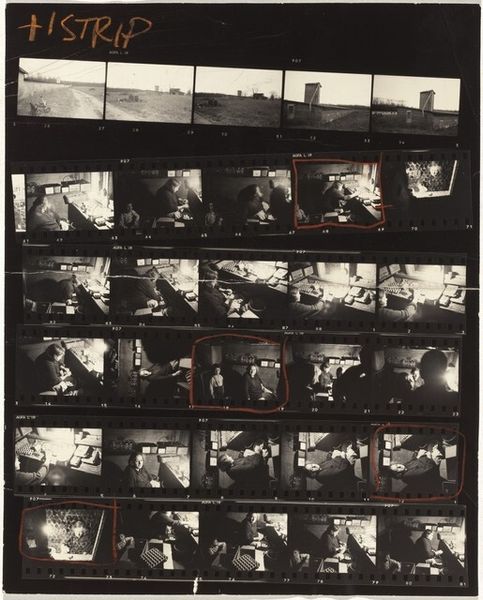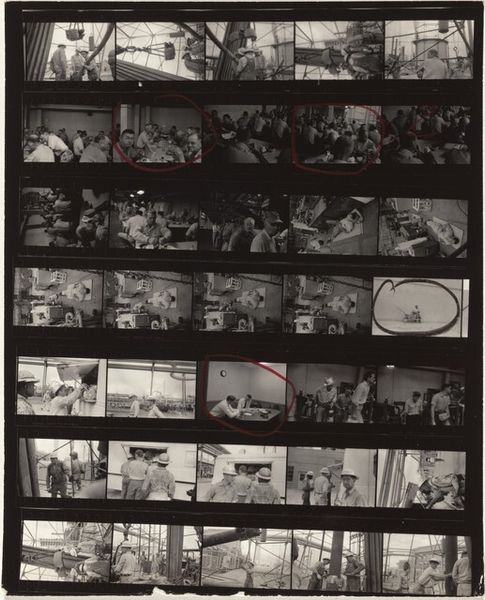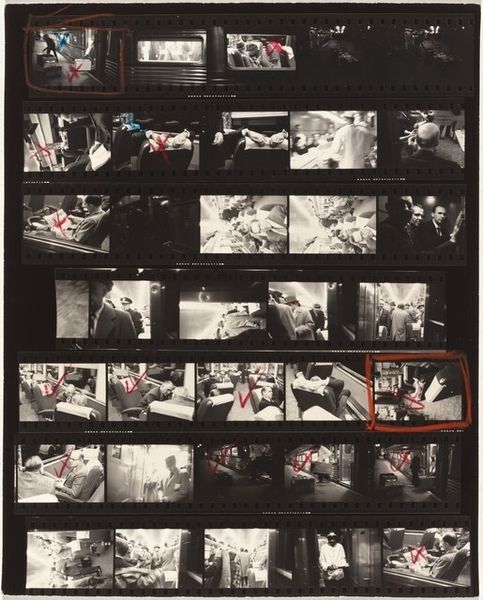
#
excavation photography
#
dark object
#
film photography
#
dark hue
#
culture event photography
#
dark colour palette
#
visual diary
#
holiday photography
#
film
#
celebration photography
Dimensions: overall: 25.2 x 20.2 cm (9 15/16 x 7 15/16 in.)
Copyright: National Gallery of Art: CC0 1.0
Curator: This is Robert Frank's "Hollywood 51," from 1958. It presents a strip of 35mm film, a sequence of images captured by Frank, and annotated. I find the entire object, the artifact itself, so compelling. Editor: Immediately, I am drawn to the stark contrasts, the blacks and whites. It’s fragmented and raw. A bit haunting, actually, like a series of half-remembered dreams. What catches your eye first about it? Curator: The way the everyday blends with the iconic, really. We see these mundane scenes of daily life, interwoven with glimpses of the "Hollywood" title, an aspirational world of celebrity and fantasy. I interpret the annotations as an important addition, because they serve as commentary on this visual narrative. They feel self-aware. Editor: The film strip as a symbol here... It speaks to me of storytelling, memory, and the passage of time. Each frame is a moment captured, but strung together, they suggest a larger narrative. The red markings call attention to key scenes or themes—maybe those images struck the artist for having particular social currency. What do you make of the imagery? What messages about 1950s America is Frank conveying? Curator: Exactly! I see Frank critiquing the constructed reality of the "American Dream" using common photographic tropes of the time. The images feel almost anthropological, a study of a culture in motion—one grappling with consumerism and identity. It feels as if the darker tones contribute to the sense of alienation. Editor: Do you mean that the darker hue is what holds emotional power in these small windows onto the world? In my mind, there is both intimacy and distance. I see snapshots of humanity, vulnerable moments amidst a landscape of cultural iconography. Curator: Precisely. By revealing the raw edges of his artistic process, Frank asks us to look critically at the stories we tell ourselves, the ideals we aspire to, and the realities we often ignore. He's holding up a mirror, exposing the fault lines beneath the polished surface. Editor: A powerful, unflinching vision. It is this visual disruption that solidifies the work in collective memory. It’s clear that the film has lasting emotional value. Curator: Indeed. This is why Frank remains such a vital voice. His willingness to challenge conventional narratives and expose uncomfortable truths is perhaps even more relevant today. Editor: Well, seeing it in this new context is definitely illuminating. I feel I’m walking away with a deeper understanding.
Comments
No comments
Be the first to comment and join the conversation on the ultimate creative platform.
